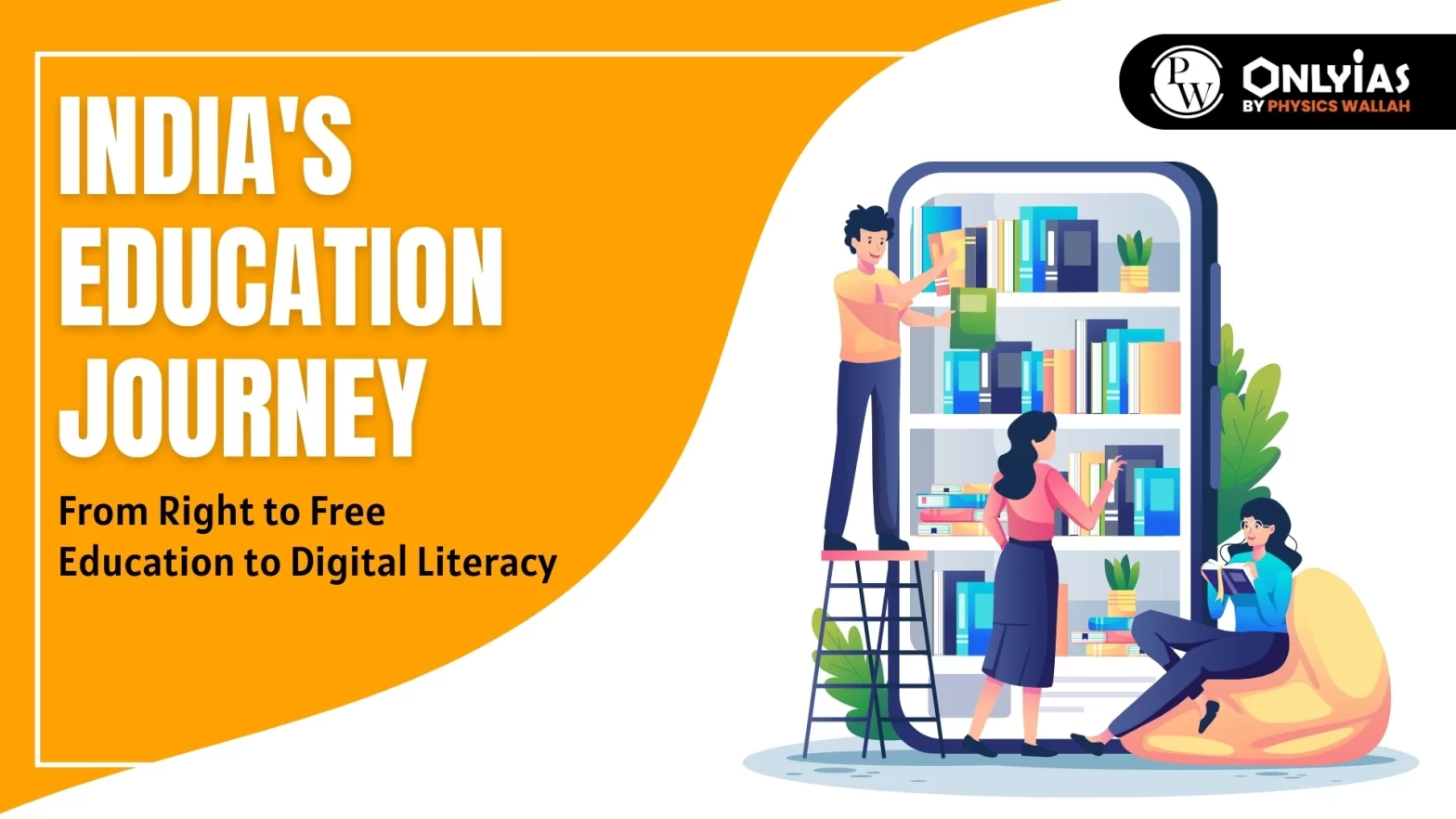Context: This article is based on an Editorial “Why India must measure digital literacy” which was published in the Indian Express. This article is highlighting the significance of digital literacy in Indian education system, which is playing an important role for the future development of youths and consequently for the economic development.
India’s taken Steps for Improvement in School Enrollment
- The Right to Free and Compulsory Education (2009): It guarantees elementary schooling to all children in the age group of 6-14 years.
- The Rashtriya Madhyamik Shiksha Abhiyan (2009): It was launched by the Government to enhance access to secondary education.
Pre-Covid Scenario of India’s Education
- For primary schools, by 2018, the proportion of 6-14 years out of school children had come down to 2.8%.
- For secondary schools, between 2010 and 2018, the proportion of 15-16 years out of school had come down from 16.1% to 13.1%.
Impact of Covid-19 on School Enrollment
- Closing Down of Schools: In March 2020, schools in India and the rest of the world closed down due to Covid-19.
- India had one of the longest durations of school closures with schools, especially primary schools, remaining closed for almost two years.
- As per ASER Report 2020-21, a minor increase in out of school numbers was observed, but it was primarily for the age group of 6-10 years, mostly by delay in recording enrollments.
- After the settling down of the situation, the enrollment showed further positive trends.
- For primary schools, the proportion of 6-14 year old children not enrolled in school fell further to 1.6% in 2022.
- It was the lowest it has been in the decade since the RTE came into effect.
- For secondary schools, the proportion of 15-16 year olds, declined from 9.9% in 2020 to 7.5% in 2022.
- The penetration of Smartphones in Rural India: In 2018, only 36% of rural households had a smartphone but during 2020-21, with the economy and the education system transitioning to a virtual mode, having access to a digital device almost became a necessity.
- The proportion of rural households with a smartphone almost doubled during the pandemic to 67.6% and further to 74.8% in 2022.
Also Read: National Education Policy NEP 2020, Comprehensive Guide
Significance of Digital Literacy
- As per the World Development Report: It states that by bridging the digital divide, the impact of digital technologies on development can be much more positive and influential.
- The Case of India: With rising access to digital devices, India has an opportunity to make the best use of both the “demographic” as well as the “digital dividend”.
- However, the “demographic dividend” can only be exploited if the labor force has the required skills to participate productively in the economy’s growth process.
- Need To Do: There is a need to identify those areas where government support and better planning at the policy level is required.
- Role of EdTech: They are playing a significant role in delivering educational resources as well as providing targeted instruction to students who are lagging behind which requires the digital literacy of youth.
Conclusion:
With the positive outcome in school enrollments and penetration of digital education, the time has come to focus on the quality of our labor force that needs to keep pace with the developmental needs that would be only possible if our youth are well supported to achieve their aspirations and participate productively in the economy.
![]() 22 Dec 2023
22 Dec 2023

